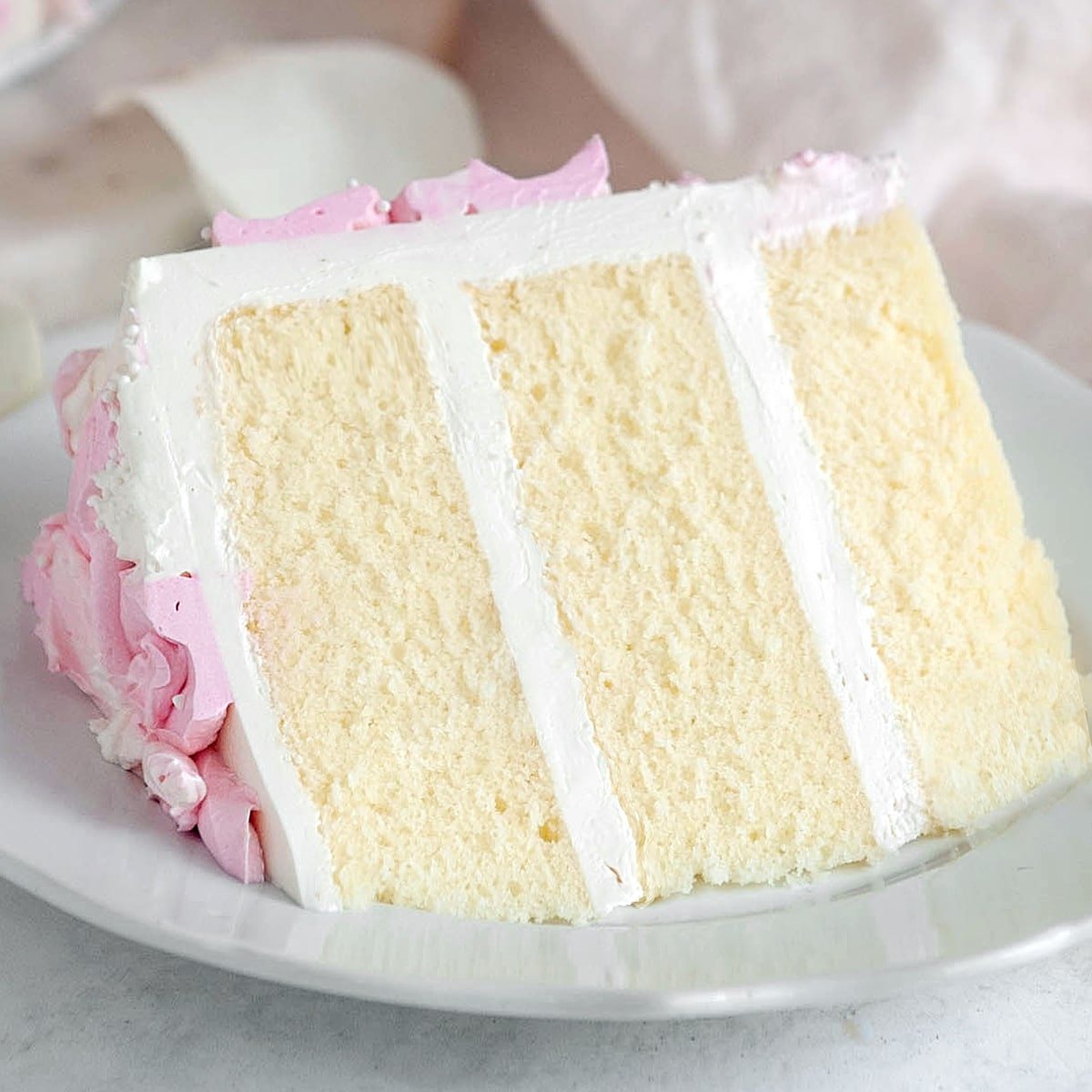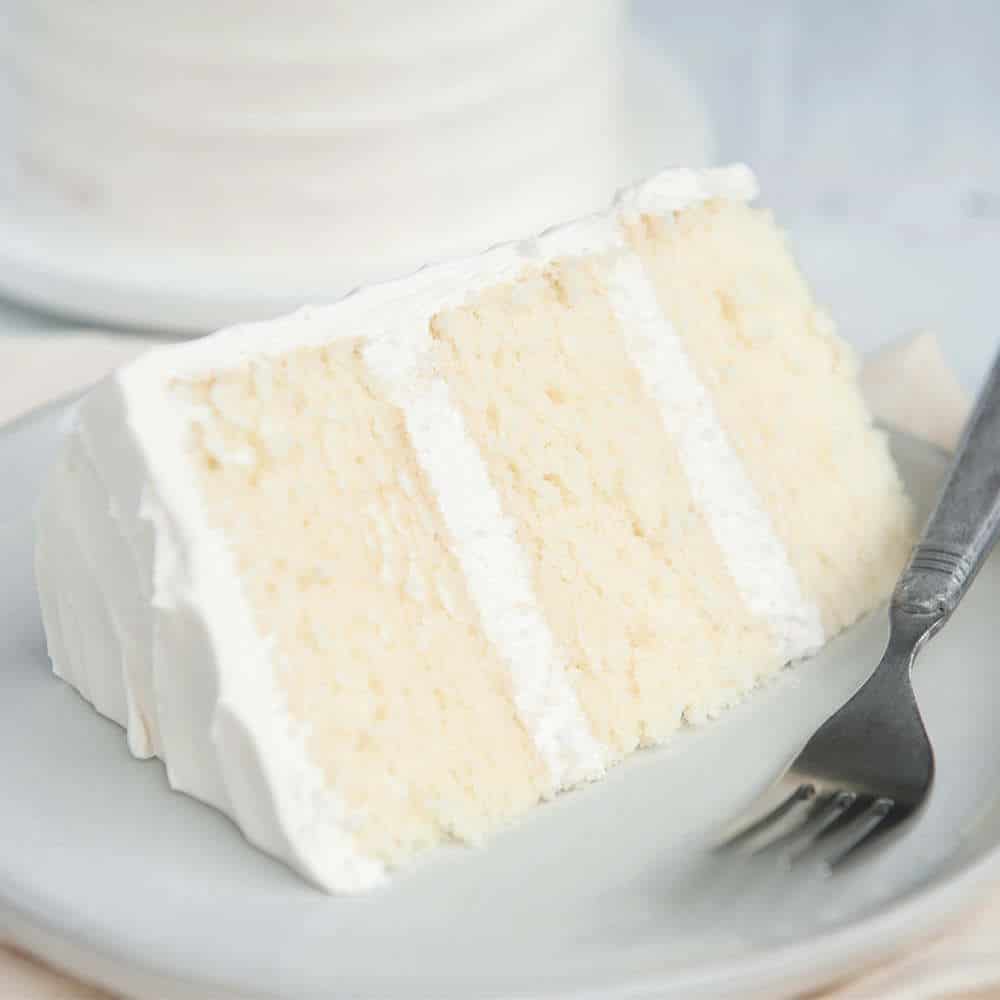Welcome to the world of delectable desserts, where we embark on a journey to create a moist and fluffy vanilla cake that will tantalize your taste buds and leave you craving for more. Vanilla cakes are a classic for a reason, their versatility and timeless flavor profile make them a beloved choice for any occasion.
In this comprehensive guide, we will explore the secrets to achieving the perfect moist and fluffy vanilla cake. From the essential ingredients to the meticulous baking techniques, we will guide you through every step of the process, ensuring that your cake turns out as a masterpiece.
Ingredients for a Moist and Fluffy Vanilla Cake

To achieve a moist and fluffy vanilla cake, specific ingredients play crucial roles in creating the desired texture. Let’s explore the essential ingredients and their functions:
Flour
-*All-purpose flour
Provides the structure and framework for the cake. Its gluten content contributes to the elasticity and chewiness of the crumb.
Sugar
-*Granulated sugar
Adds sweetness and tenderizes the cake. It attracts moisture, keeping the cake moist and preventing it from becoming dry.
Butter
-*Unsalted butter
Provides richness, flavor, and tenderness. When creamed with sugar, it incorporates air into the batter, resulting in a light and fluffy texture.
Eggs
-*Large eggs
Act as binders, emulsifiers, and leavening agents. They help hold the ingredients together, create a smooth batter, and contribute to the cake’s rise.
Milk
-*Whole milk
Adds moisture and richness to the batter. It helps dissolve the sugar and cocoa powder, ensuring an even distribution throughout the cake.
Baking Powder
-*Double-acting baking powder
A leavening agent that reacts twice, once when mixed with wet ingredients and again when heated in the oven. It helps the cake rise and achieve its fluffy texture.
Vanilla Extract
-*Pure vanilla extract
Enhances the flavor and aroma of the cake, adding a touch of sweetness and complexity.
Step-by-Step Instructions for Preparing the Batter

To achieve a moist and fluffy vanilla cake, meticulous attention to the order of ingredient addition and mixing techniques is paramount. By following these steps precisely, you can create a batter with the perfect consistency, ensuring a delectable and indulgent treat.
Before commencing, ensure all ingredients are at room temperature, as this facilitates even blending and prevents lumps. Begin by sifting together the dry ingredients—flour, sugar, baking powder, and salt—into a large bowl. This process aerates the flour, resulting in a lighter and airier cake.
Combining Wet and Dry Ingredients
In a separate bowl, whisk together the buttermilk, eggs, vanilla extract, and melted butter. Gradually add the wet ingredients to the dry ingredients, mixing until just combined. Overmixing can develop gluten in the flour, resulting in a tough cake. Instead, use a gentle folding motion to incorporate the ingredients, ensuring no streaks of flour remain.
Baking Techniques for Optimal Moistness and Fluffiness
Baking a moist and fluffy vanilla cake requires meticulous attention to oven temperature, baking time, and cooling methods. These factors significantly influence the cake’s texture, flavor, and overall quality.
Oven Temperature
- Preheat the oven thoroughly: Preheating ensures an even temperature distribution, promoting consistent baking.
- Maintain an optimal temperature: For a moist and fluffy cake, bake at 350-375°F (175-190°C). Lower temperatures may result in a dense cake, while higher temperatures can overcook the edges.
Baking Time
- Bake until a toothpick inserted into the center comes out clean: Overbaking can dry out the cake, while underbaking will leave it uncooked.
- Check the cake regularly: Insert a toothpick after about 20 minutes of baking. If it comes out with moist crumbs, continue baking. If it comes out dry, the cake is done.
Cooling Methods
- Cool in the pan for 10 minutes: This allows the cake to set slightly and prevent it from collapsing when removed from the pan.
- Invert the cake onto a wire rack: This promotes even cooling and prevents the cake from steaming in the pan, which can make it soggy.
- Let cool completely: Allow the cake to cool for at least an hour before frosting or serving. This ensures that the frosting will adhere properly and the cake will be easier to cut.
Troubleshooting Common Issues
Baking a moist and fluffy vanilla cake can be a delightful experience, but it’s not without its challenges. Here are some common issues you may encounter and techniques to overcome them:
Cakesinking in the center
This issue occurs when the cake batter is not baked evenly, resulting in a sunken center. To prevent this, ensure your oven is preheated to the correct temperature and the cake is baked for the appropriate amount of time. Additionally, avoid opening the oven door during baking, as this can cause the cake to lose heat and sink.
Cakes over-browning
If your cake is browning too quickly, cover the edges with aluminum foil to prevent burning. Reduce the oven temperature slightly or adjust the rack position to lower the cake in the oven.
Cakes dense and dry
A dense and dry cake can be caused by over-mixing the batter. Be sure to mix the ingredients only until they are combined, avoiding over-beating. Additionally, ensure your baking powder and baking soda are fresh and active for optimal leavening.
Cakes sticking to the pan
To prevent your cake from sticking to the pan, grease and flour the pan thoroughly before pouring in the batter. You can also use parchment paper to line the bottom of the pan for easy removal.
Variations and Flavor Enhancements
The versatility of vanilla cake allows for endless possibilities of customization. Experiment with different flavors, fillings, and toppings to create a unique and indulgent dessert that caters to your preferences.
Incorporating additional flavors into the batter, such as cocoa powder for a chocolatey twist or almond extract for a nutty aroma, transforms the cake’s taste profile. Filling the layers with jams, compotes, or custards adds moisture and sweetness, while frosting the cake with buttercream, cream cheese, or ganache provides a rich and velvety finish.
Flavor Variations
- Chocolate Vanilla Swirl: Divide the batter into two portions, adding cocoa powder to one for a marbled effect.
- Lemon Vanilla: Add lemon zest and juice to the batter for a refreshing citrusy flavor.
- Red Velvet: Incorporate red food coloring and buttermilk for a vibrant and slightly tangy cake.
Filling Options
- Raspberry Jam: A classic filling that complements the vanilla flavor with a tart sweetness.
- Chocolate Ganache: A rich and decadent filling made from chocolate and cream.
- Fruit Compote: A flavorful and juicy filling made from simmered fruits, such as berries or peaches.
Frosting Variations
- American Buttercream: A smooth and creamy frosting made from butter, sugar, and milk.
- Cream Cheese Frosting: A tangy and rich frosting made from cream cheese, butter, and sugar.
- Ganache Frosting: A glossy and decadent frosting made from chocolate and cream.
By experimenting with different variations and flavor enhancements, you can create a moist and fluffy vanilla cake that is both visually stunning and tantalizing to the taste buds.
Last Word
As you master the art of crafting this delectable vanilla cake, you will discover the joy of creating a dessert that brings smiles to faces and creates lasting memories. Whether you are a seasoned baker or a novice in the kitchen, this recipe will empower you to create a cake that will impress your loved ones and become a staple in your baking repertoire.
So, gather your ingredients, preheat your oven, and let us embark on this culinary adventure together.
FAQ Section
What is the secret to a moist and fluffy vanilla cake?
The key to achieving a moist and fluffy vanilla cake lies in the careful balance of ingredients and the proper mixing techniques. Using buttermilk or sour cream adds moisture and tenderness, while the correct ratio of flour to liquid ensures a fluffy texture.
How can I prevent my vanilla cake from becoming dry?
To prevent your vanilla cake from becoming dry, it is crucial to not overmix the batter. Overmixing can develop the gluten in the flour, resulting in a tough and dry cake. Additionally, baking the cake at the correct temperature and for the appropriate amount of time is essential to avoid overbaking.
Can I substitute other ingredients in the vanilla cake recipe?
While substitutions can be made, it is important to note that they may affect the final texture and flavor of the cake. For instance, using a different type of milk may alter the richness and moisture of the cake, and substituting all-purpose flour with a gluten-free flour blend may require adjustments to the liquid content.
